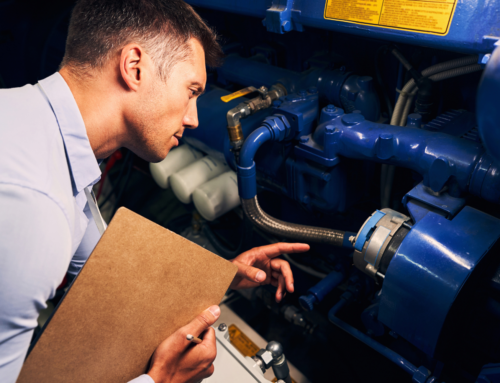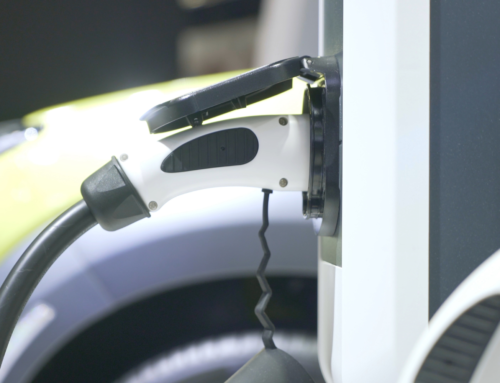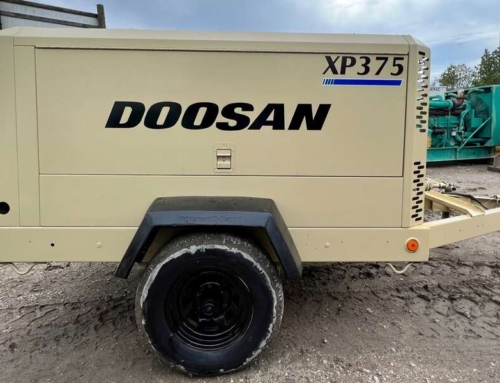If you are working on a job site or in another industrial environment, the last thing you want is to make more noise in an already loud environment, potentially damaging you and your employee’s hearing. Diesel generators typically make quite a bit of noise, and used diesel generators may be even louder.
Whether you are looking to purchase a used diesel generator and want to ensure that it stays at a reasonable sound level or the one you already own is a bit too loud for your tastes, here are a few ways to reduce the noise from your used diesel generator.
Check the specs before you buy.
Though it is nearly impossible to buy a used diesel generator that is completely silent, there are a few factors that determine how loud it will be when the generator is operating:
Type of generator: Not all generators are created equal when it comes to technology. Typically, generators that have inverter technology make the least amount of noise. Size is also a factor, as smaller diesel generators produce less noise than larger ones.
Size of the engine: When it comes to noise reduction, bigger is not always better. Generally, larger engines make more noise because they generate more power.
Soundproofing options: There are different options used diesel generator manufacturers can put into place in order to soundproof the machine, such as a sound cancelling frame or mufflers. However, these are not always included, but you can add these yourself at a later date.
Move your generator farther away.
Sometimes the most straightforward solution is the best one. Moving your used diesel generator farther away from yourself or your job site doesn’t decrease the noise that the generator makes, but you will not be as affected by it. It is estimated that the noise can be reduced by six decibels if the distance between you and the generator is doubled.
Place your used diesel generator on a rubber mat.
Many of the loud noises your used diesel generator produces is due to the vibrations created while the machine is in use. Placing the generator on a rubber or specialized anti-vibration mat helps to absorb the vibrations, lessening the sound the generator produces. This can be especially useful in indoor environments, where you cannot move the generator.
Block the sound with barriers.
Solid barriers placed between you and your used diesel generator, like fences, enclosures, or walls, help dampen the sound before it ever reaches your ears. Concrete walls can reduce up to ten decibels of noise, even more if the generator is fully enclosed. This can also help protect your used diesel generator from the elements, ensuring that it stays in good, working condition for longer.
Dampen sound using insulation.
In an indoor environment or if your used diesel generator is enclosed, the use of sound-absorbing insulation can make a big difference. Acoustic wall panels are a great option, and they come in many different materials, such as perforated steel.
Employ the use of an attenuator.
An attenuator is a small device that pulls air through and reduces noise. Air passes between the splitters, which help to absorb sound by lessening the wavelength. It can reduce sound by a whopping amount, between 50-90 decibels. This is a great option for used diesel generators in an industrial setting, especially if there are multiple generators functioning on the same system.
Customization.
There is nothing wrong with a little bit of DIY. There are a few simple tricks you can do yourself that can reduce the noise from your used diesel generator.
The first way you can help reduce noise produced by your generator is to move the way the pipes are positioned. As you well know, it is best to position the exhaust away from you or your general vicinity, but it can help to position the exhaust pipe vertically. By facing the exhaust pipe directly upwards, this ensures that it is not hitting any nearby walls that could amplify the sound, and is instead being shot into the air.
Another way to make your used diesel generator quieter is to replace the muffler. Most generators come with mufflers, but they may have become damaged with use, making them louder. Additionally, some mufflers are specifically designed to limit sound. A new muffler will certainly reduce the noise produced by your generator.
The last way to customize your used diesel generator in order to reduce sound is a quick, impermanent fix. It requires connecting a hose to the exhaust pipe that leads into a bucket filled with water. While it doesn’t limit sound caused by vibrations of the machine, the idea is that the bucket of water acts as a sound insulator for the exhaust. It will not solve all your noise-related problems, but it works in a pinch.
With the addition of any of these solutions, your used diesel generator is sure to be quieter, protecting you and your employee’s hearing. If your generator continues to be loud, it may be damaged or defective, and you should be sure to have it checked out by industry professionals. If you have further questions about how to reduce noise from your used diesel generators, give Swift Equipment Solutions a call at +1-866-571-0044 or email us at sales@swiftequipment.com.
Frequently Asked Questions (FAQ)
Why is my used diesel generator so loud?
As a general rule of thumb, the more power a generator produces, the more noise it creates. This is caused by vibrations in the engine and the exhaust. If your used diesel generator is exceedingly loud, it may be damaged or defective and is in need of being serviced or repaired.
How do I buy a quiet used diesel generator?
When buying a used diesel generator, it is important to note that large engines and outdated mufflers or technology all make a generator louder than it needs to be. Ask the seller what options they have taken to reduce noise. If you have any questions about purchasing a used diesel generator, give Swift Equipment Solutions a call at +1-866-571-0044 or email us at sales@swiftequipment.com.
How can I reduce the noise from my used diesel generator?
There are many options to reduce the noise from your used diesel generator, such as soundproofing, moving the generator, placing it on a rubber mat, and customization within the machine.







Leave A Comment